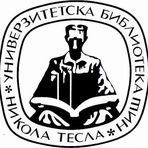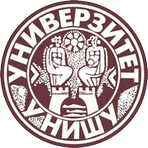Title
Unapređenje pouzdanosti i performansi pseudoslučajnih pozicionih optičkih enkodera
Creator
Miljković, Goran 1977-
CONOR:
6370919
Copyright date
2024
Object Links
Select license
Autorstvo-Nekomercijalno-Bez prerade 3.0 Srbija (CC BY-NC-ND 3.0)
License description
Dozvoljavate samo preuzimanje i distribuciju dela, ako/dok se pravilno naznačava ime autora, bez ikakvih promena dela i bez prava komercijalnog korišćenja dela. Ova licenca je najstroža CC licenca. Osnovni opis Licence: http://creativecommons.org/licenses/by-nc-nd/3.0/rs/deed.sr_LATN. Sadržaj ugovora u celini: http://creativecommons.org/licenses/by-nc-nd/3.0/rs/legalcode.sr-Latn
Language
Serbian
Cobiss-ID
Theses Type
Doktorska disertacija
description
Datum odbrane: 06.02.2025.
Other responsibilities
Academic Expertise
Tehničko-tehnološke nauke
University
Univerzitet u Nišu
Faculty
Elektronski fakultet
Group
Katedra za merenja
Alternative title
Improving the reliability and performance of pseudorandom position optical encoders
Publisher
[G. S. Miljković]
Format
141 list
description
Biografija autora: list 126.
Bibliografija: list 118-124.
description
Metrology
Abstract (en)
Research within the doctoral dissertation is focused on the
development and improvement of the reliability and performance of
pseudorandom position encoders. One of the goals is to find an optimal
solution for the code reading system, which, in combination with the
width and arrangement of the code tracks on the encoder disc, enables
a higher degree of reliability and flexibility in the operation of the
encoder. Sources of optical encoder errors affecting the accuracy of the
measured angular position were analyzed. A reliable method of
detecting code reading errors has been applied and the way the encoder
works in the event of errors or failure of parts of the code reading
system is defined. Different solutions of serial pseudorandom to
natural converters were analyzed and compared using simulations and
implementations in the LabVIEW FPGA environment. Solutions with
shorter code conversion times are presented. A solution for reliable
determination of the zero position when mounting the encoder on the
motor shaft is presented. Three experimental pseudorandom encoder
systems were implemented using glass and plastic discs, as well as
different code reading systems. An integrated optical sensor with
several photodiodes was used, as well as a commercial optical module
intended for use with incremental encoders. Algorithms of encoder
operation were tested with simulated bits of pseudorandom sequence,
as well as with real signals from experimental systems. The
functionality of the encoder was tested and confirmed under normal
operating conditions, as well as when code reading errors occur.
Authors Key words
merenje ugaone pozicije, apsolutni optički enkoderi,
pseudoslučajne binarne sekvence, konverzija pseudoslučajnog u
prirodni kod
Authors Key words
measuring angular position, absolute optical encoders, pseudorandom
binary sequences, pseudorandom/natural code conversion
Classification
681.532.8(043.3)
Subject
Т110;
T121
Type
Tekst
Abstract (en)
Research within the doctoral dissertation is focused on the
development and improvement of the reliability and performance of
pseudorandom position encoders. One of the goals is to find an optimal
solution for the code reading system, which, in combination with the
width and arrangement of the code tracks on the encoder disc, enables
a higher degree of reliability and flexibility in the operation of the
encoder. Sources of optical encoder errors affecting the accuracy of the
measured angular position were analyzed. A reliable method of
detecting code reading errors has been applied and the way the encoder
works in the event of errors or failure of parts of the code reading
system is defined. Different solutions of serial pseudorandom to
natural converters were analyzed and compared using simulations and
implementations in the LabVIEW FPGA environment. Solutions with
shorter code conversion times are presented. A solution for reliable
determination of the zero position when mounting the encoder on the
motor shaft is presented. Three experimental pseudorandom encoder
systems were implemented using glass and plastic discs, as well as
different code reading systems. An integrated optical sensor with
several photodiodes was used, as well as a commercial optical module
intended for use with incremental encoders. Algorithms of encoder
operation were tested with simulated bits of pseudorandom sequence,
as well as with real signals from experimental systems. The
functionality of the encoder was tested and confirmed under normal
operating conditions, as well as when code reading errors occur.
“Data exchange” service offers individual users metadata transfer in several different formats. Citation formats are offered for transfers in texts as for the transfer into internet pages. Citation formats include permanent links that guarantee access to cited sources. For use are commonly structured metadata schemes : Dublin Core xml and ETUB-MS xml, local adaptation of international ETD-MS scheme intended for use in academic documents.


